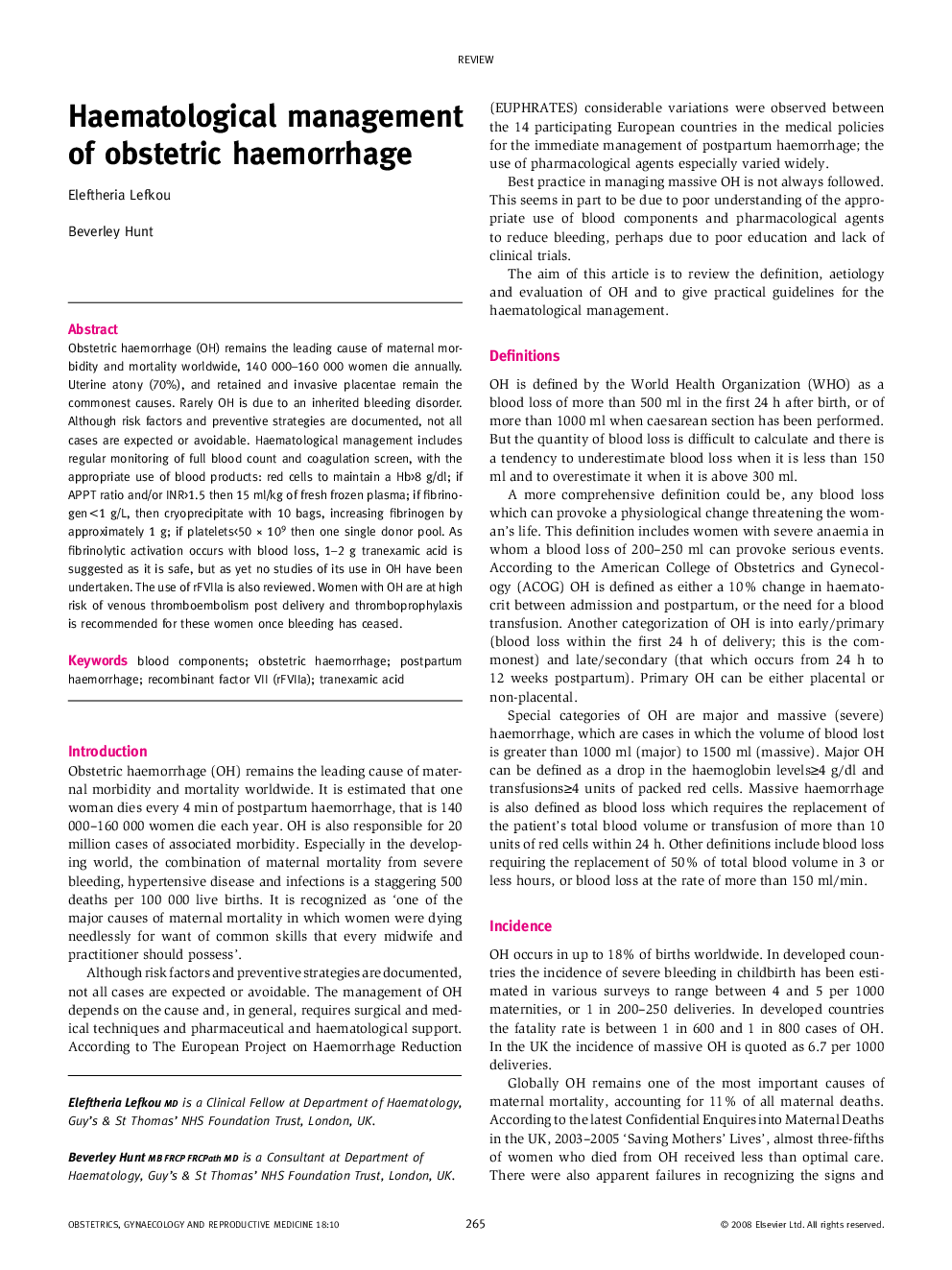| Article ID | Journal | Published Year | Pages | File Type |
|---|---|---|---|---|
| 3967194 | Obstetrics, Gynaecology & Reproductive Medicine | 2008 | 7 Pages |
Abstract
Obstetric haemorrhage (OH) remains the leading cause of maternal morbidity and mortality worldwide, 140 000-160 000 women die annually. Uterine atony (70%), and retained and invasive placentae remain the commonest causes. Rarely OH is due to an inherited bleeding disorder. Although risk factors and preventive strategies are documented, not all cases are expected or avoidable. Haematological management includes regular monitoring of full blood count and coagulation screen, with the appropriate use of blood products: red cells to maintain a Hb>8 g/dl; if APPT ratio and/or INR>1.5 then 15 ml/kg of fresh frozen plasma; if fibrinogen<1 g/L, then cryoprecipitate with 10 bags, increasing fibrinogen by approximately 1 g; if platelets<50 Ã 109 then one single donor pool. As fibrinolytic activation occurs with blood loss, 1-2 g tranexamic acid is suggested as it is safe, but as yet no studies of its use in OH have been undertaken. The use of rFVIIa is also reviewed. Women with OH are at high risk of venous thromboembolism post delivery and thromboprophylaxis is recommended for these women once bleeding has ceased.
Related Topics
Health Sciences
Medicine and Dentistry
Obstetrics, Gynecology and Women's Health
Authors
Eleftheria Lefkou, Beverley Hunt,
